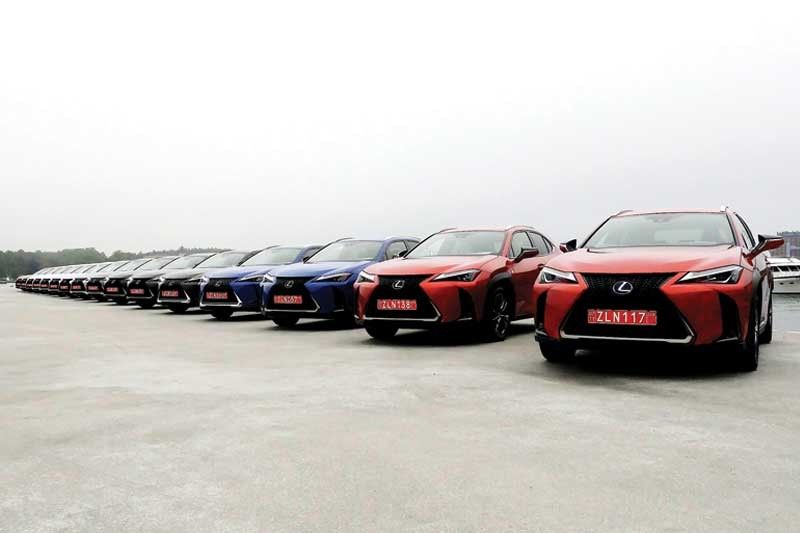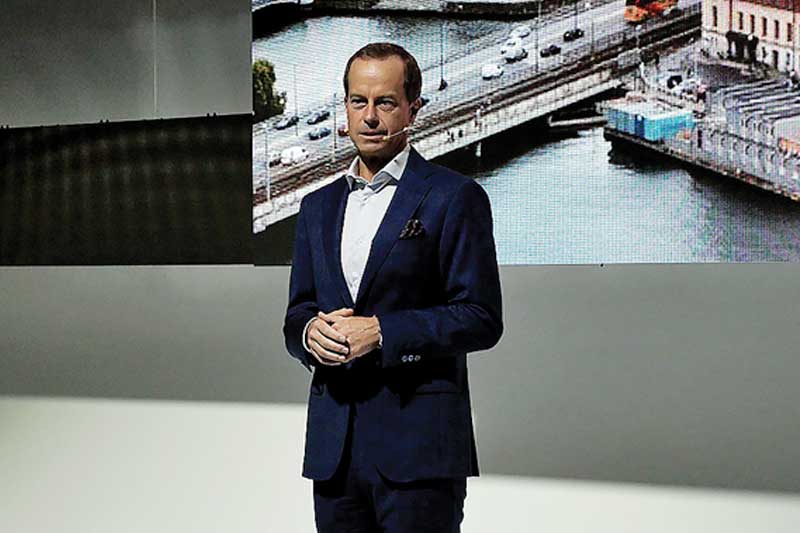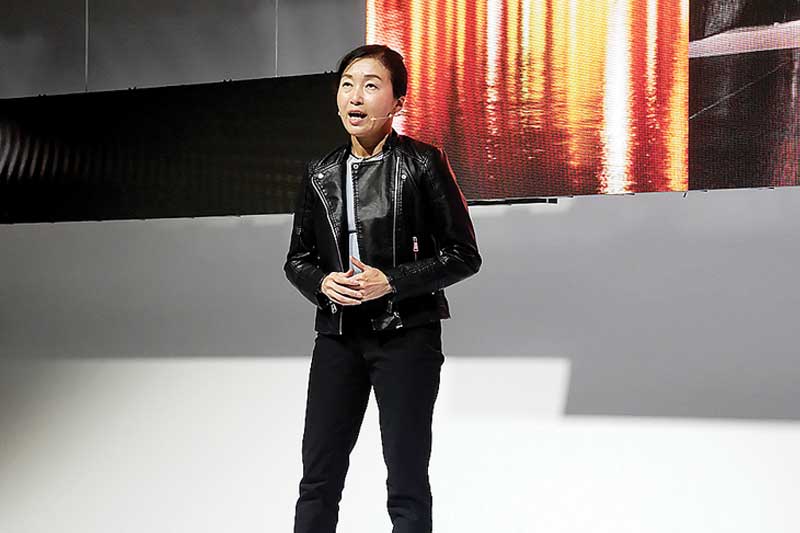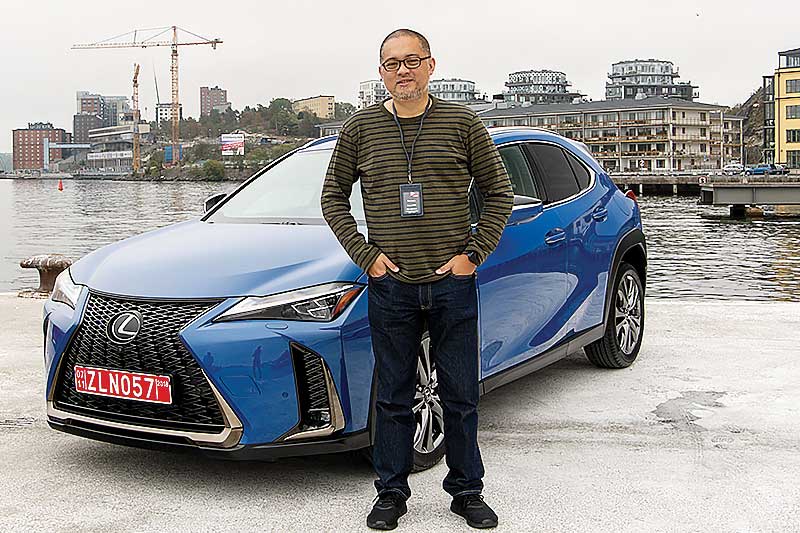Meeting and driving the Lexus UX in Stockholm

From the air and rapidly getting larger as our plane descends, Stockholm is a lush green with swirls of glistening water. The Swedish capital, comprised of 14 islands sitting on the majestic Lake Mälaren, is an inspiring, sparsely populated Scandinavian city accessed mainly by foreign tourists through its modest- sized Arlanda Airport.
“The reason we selected Stockholm… is because the energy and creativity that this city has is world-class,” begins David Nordstrom, Lexus Asia Pacific VP at the product presentation held at Delight Studios in Nacka. “It’s often referred to as the world’s biggest small town. It’s a lot smaller in size when compared to other European cities like London, Paris, Berlin, and Rome. So it gives you a small-town feel with world-class amenities.”
Apropos too, one may hasten to add, to the vehicle that the luxury carmaker is highlighting. First presented to the world last March at the Geneva International Motor Show, the UX takes its place as the smallest SUV in the Lexus lineup, offering the “the brand’s innovative design, luxury features, and advanced safety in a package that combines charismatic new styling elements and ultra-efficient new powertrains.” The UX name is derived from the design team’s guiding concept describing the vehicle’s “mission” — hence “Urban plus X-over (crossover).”

Lexus Asia Pacific VP David Nordstrom starts off the UX presentation.
“Over the last few years, Lexus has been on a journey of product and brand transformation. You have seen our design language change to become bolder and more distinctive, and hopefully you have experienced a significant change in our driving dynamics that pairs our world-renowned comfort with Lexus’ unique sense of dynamic handling,” continues Nordstrom. “The all-new UX showcases the Lexus design language and highlights our ability to craft luxury interiors. Although the UX will be a gateway vehicle for our lineup, it will soon become one of our core models.”
Perhaps like Stockholm, the UX is small yet holds the power to pleasantly surprise. And just as the city is a proven cauldron of bright ideas and worldwide hits like Abba, Ikea, and Spotify, the new Lexus crossover is a product of putting good imagination, industry, and choice materials to full and good effect.
While it is the first of its kind in the portfolio, the UX design team is headed by the first female chief engineer in the Lexus organization — who is also its first female managing officer. “In developing this vehicle, I drew heavily from my prior experience in Europe,” says Chika Kako in her presentation. “While on overseas assignment at our R&D division there, I got a fresh perspective of the varied philosophies behind luxury and wealth.”
The intangibles of time, experience, and beauty appear significantly on the aspirational radar, and these are values UX strive to address. Kako and her design team wanted to evoke an “emotional connection with the driver” in this vehicle that is more than merely the sum of its highly detailed parts.

Lexus UX chief designer and managing officer Chika Kako says she strove to create an emotional connection between the crossover and its driver. (Photos taken by the author using a Lumix GX9)
Replying through a translator to a question from STAR Motoring, Kako reiterates that the UX is a “car developed for the customer who’s entering the luxury market for the first time — and for people joining the Lexus for the first time.” She asserts, “That was my first mission. This may be the youngest of all the siblings, but for us, we don’t look at it as just small, medium, and large sizes.”
Lexus could have chosen a sedan for its gateway model, but the UX as a crossover expresses the virtues and tenets that Kako envisioned. “We understand completely that there is a large base of customers who enjoy sedans. But here was a chance to create something new and exciting that we’ve never seen before. So think about something having the driving performance of a sporty coupe, but with crossover looks... That was something I really wanted to achieve. That’s why I went for this body type.”
Well-sculpted and brandishing a lot of new technology and features, the UX brandishes the iconic spindle grille of the brand and expresses a taut, consistent design that is exciting and bold. Its sleek sheet metal doesn’t only give it heft and beauty but serve to lower the crossover’s coefficient of drag.
Inside the fifth Lexus SUV line’s cabin are accoutrements that defy its “entry-level” label. Getting behind the wheel gives you an impression of a luxury sedan — albeit higher. “Designers created a feeling of seamless continuity inside the UX. From the driver’s seat, the upper plane of the instrument panel appears to extend out beyond the windshield into the hood and fenders giving the driver an excellent field of vision and a clear sense of the vehicle’s dimensions and tire placement. When viewed from outside the vehicle, the hood appears to connect directly to the instrument panel through the windshield, blurring the boundary between interior and exterior,” reports the company in a release. The field of vision is something personally noticed and lauded by Toyota head Akio Toyoda himself.

The UX highlights a so-called “seat-in-control” concept where critical vehicle functions are grouped around the driver’s side of the cabin, and the seatback shape allows the driver to operate them while maintaining a comfortable, natural posture. It conscripts luxurious details and functions such as six-way manual or eight-way power-adjustable front seats. A three-spoke steering wheel and analog clock are exclusive touches previously seen in the Lexus LS flagship. The UX also receives the Lexus Climate Concierge which used to be confined to more premium models. This “automatically links heating and cooling airflow with the heated and ventilated seats to optimize interior temperature comfort.”
While the buyers in the Philippines wait for final specifications (and for the much-anticipated launch expected this year), we do know there will be two power plants available. Powering the UX 200 variant is a 2.0-liter, inline, four-cylinder engine delivering 168hp and 205Nm — mated to a new Direct Shift-Continuously Variable Transmission which “combines the smooth, fuel-efficient performance of a continuously variable transmission with a more direct driving feel.”
Then there’s the UX 250h, armed with a “new new-generation Lexus Hybrid Drive powertrain with 175 total system horsepower… the UX 250h is not only the fuel efficiency leader in the UX family, but also the performance leader. This hybrid provides exhilarating driving with high-speed responsiveness and a feeling of smooth, natural acceleration. The UX 250h is available with either front-wheel drive or E Four electric all-wheel drive.”
Trying out the F Sport-specification variant on a pre-programmed short loop, I find the UX to yield healthy power on demand — the Direct-Shift CVT providing motivation without the deadened feel of some conventional CVT systems. Everything indeed appears to be well within reach of the driver, and one will not be overwhelmed with an assortment of controls. Rather, the UX rewards your enthusiasm and sense of discover with intuitive controls – such as the new scroll wheels just at the tip of the central driver armrest.
With the historic, serene panorama of Stockholm unfolding before us, it’s hard not to feel blessed with a sensorial overload of luxury and peace.
- Latest






























